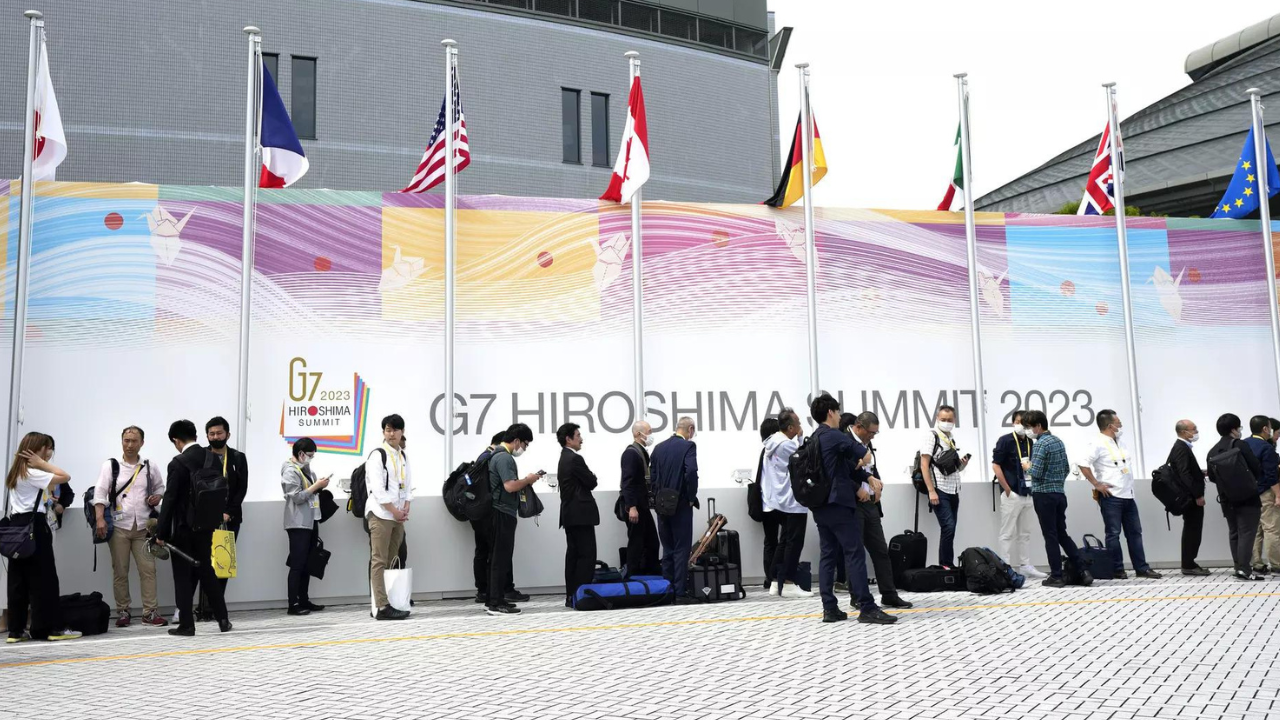Two overlapping challenges will dominate discussions within the G7: the first is Russia’s campaign in Ukraine and the second concerns the grim state of the global economy shaken not only by war but also by Covid-19.
India regular visitor
Japan, which is hosting the G7 this year, has invited India as a guest country.
India has been a regular guest at the G7, invited by France in 2019, by the UK in 2021 and when Germany was the host in 2022.
In 2020 India was invited by the US to the G7, but it was canceled due to the Covid-19.
As a regular host to the G7, India is in a unique position because it is both an emerging and developing country, yet has a right and stake in global decision-making. In many ways, India is representative of the countries excluded from the steering group.
Losing relevance?
The share of the G7 countries in global economic activity has shrunk to around 30% from around 50% four decades ago.
Developing economies such as China, India and Brazil have made huge gains, raising questions about the relevance of the G7 and its role in steering a world economy that is increasingly dependent on the growth of less wealthy nations.
G7 Block FAQ:
What is the G7?
The Group of Seven is an informal group of major industrialized nations.
It includes Canada, France, Germany, Italy, Japan, the United Kingdom and the United States.
The first summit was in 1975, when France hosted what was then a Group of Six meeting to discuss tackling a recession that followed an Arab oil embargo. Canada became the seventh member a year later. Russia joined to form the G8 in 1998, but was expelled after Moscow’s annexation of Crimea in 2014.
Where is it held this year?
The presidency of the G7 summits rotates among the seven members.
This year it’s Japan’s turn to host and it has decided to hold the event in Hiroshima, the site of the world’s first atomic attack at the end of WWII.
Why Hiroshima?
Hiroshima is the hometown of Japanese Prime Minister Fumio Kishida.
The choice of venue underlines the determination to put nuclear disarmament and non-proliferation at the top of the agenda for this year’s summit.
A path to nuclear disarmament has appeared more difficult with Russia’s recent nuclear weapons threats to Ukraine, as well as nuclear and missile development by China and North Korea.
Kishida will welcome incoming leaders to the Hiroshima Peace Park on Friday. He also plans to escort the leaders to the atomic bomb museum in the first group visit of the heads of nuclear states. There may also be a meeting with the survivors of the atomic bomb.
When is the G7 summit?
The summit will start on 19 May and end on 21 May.
Who else is invited?
In addition to the 7 countries, two representatives of the European Union will also participate in the summit.
As usual in recent years, leaders of some non-G7 countries and international organizations will also participate in some sessions.
Prime Minister Narendra Modi will attend the summit at the invitation of Japanese Prime Minister Fumio Kishida, who stressed the importance of reaching out to developing countries.
The leaders of Australia, Brazil, the Comoros, the Cook Islands, Indonesia, South Korea and Vietnam are also invited.
Ukrainian President Volodymyr Zelenskyy will virtually attend a session on Ukraine and Russia.
What will India’s role be?
India’s participation will be structured in three formal sessions.
Two of them will be held on 20 May and the third on 21 May.
In the two structural sessions of 20 May, the first concerns nutrition, health, development and gender equality. The second session is on climate, energy and the environment and the third session on 21 May is entitled “Towards a peaceful, stable and prosperous world”.
What else is India planning?
India is planning a meeting of Quadrilateral Security Dialogue (QUAD) leaders in Japan on the sidelines of the G7 summit, Foreign Minister Vinay Kwatra said.
“We are planning a meeting of the Quad leaders in Hiroshima with Japanese Prime Minister Fumio Kishida, US President Joe Biden, Australian Prime Minister Anthony Albanese and, of course, PM WaysKwatra said. The statement came after the Quad summit, scheduled for May 24 in Australia, was cancelled.
Albanese said the Quad meeting in Sydney would not go ahead after Biden canceled his visit to Australia to focus on crucial debt ceiling talks in Washington.
Prime Minister Modi is also expected to unveil a bust of Mahatma Gandhi in Hiroshima.
What are the main topics that will be discussed at the G7?
Leaders will discuss a wide range of issues, including economic policy, security, nuclear disarmament and non-proliferation, climate change, energy and gender issues.
The G7 is also expected to strongly condemn Russia’s war against Ukraine, while pledging to continue supporting Ukraine. Ukrainian President Volodymyr Zelenskyy will participate virtually in the session.
There will also be a focus on Beijing’s growing threats against Taiwan, the self-ruled democratic island that Beijing claims as its own, and ways to reduce the economic and supply chain dependence of Western democracies on China.
To address the rise of nations in the Global South, including many former colonies of Western powers with differing views and ties to Russia and China, the G-7 will offer these countries increased support on health, food security and infrastructure to develop closer ties.
(With contributions from agencies)

